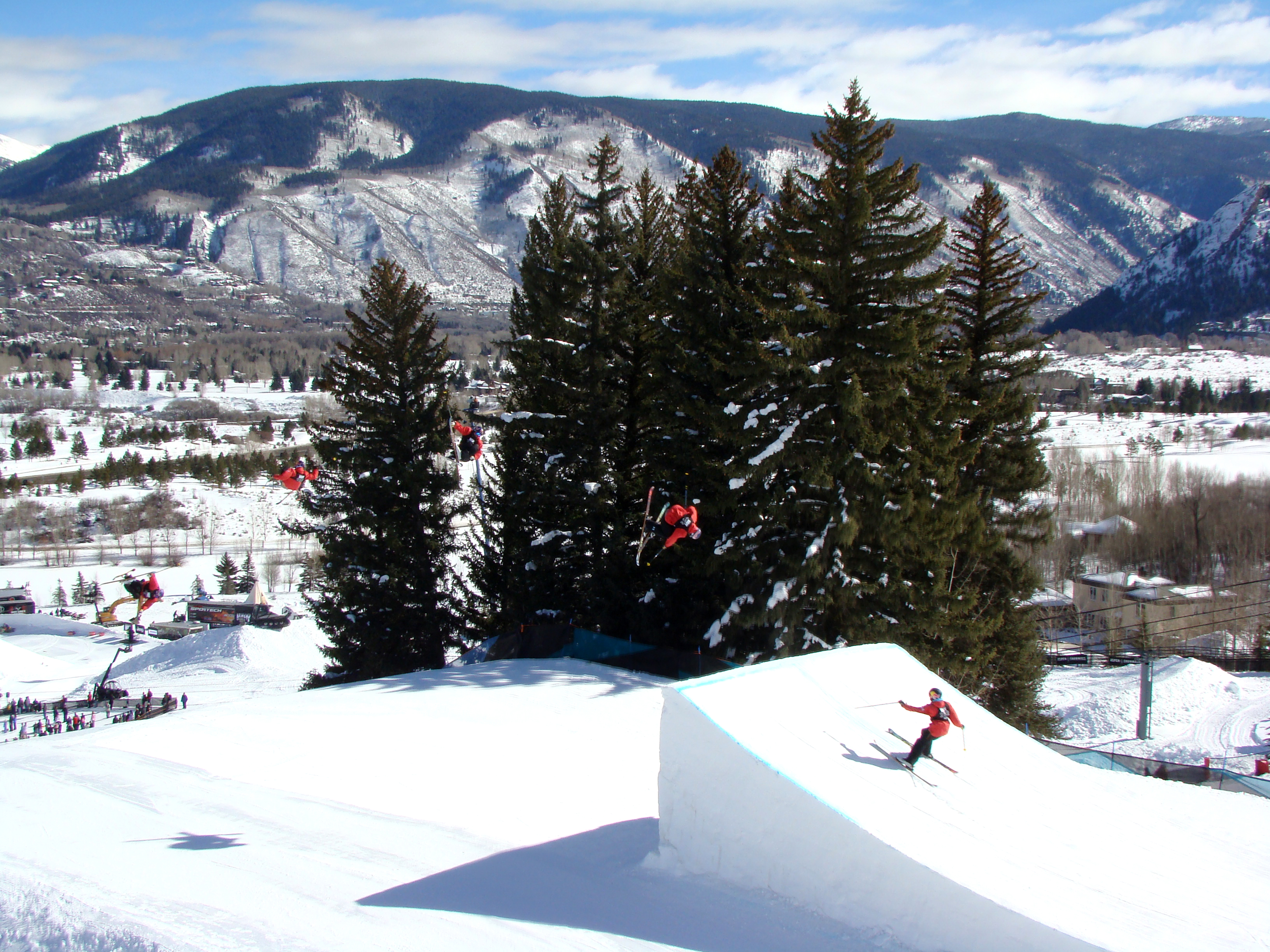On Sport: Half-Marathon Road Racing for a 2020 OTQ, Race #2
In the build-up to the 2020 U.S. Olympic Trials held in Atlanta, GA, I raced in two potential qualifying half-marathons. This post is on the second of the two races, the Humana Rock 'N Roll Arizona Half-Marathon, on January 19, 2020 (the final day of the 2020 qualifying window.) The 2020 qualifying standard for men in the half-marathon was 1:03:59, or 63:59.
Arizona State University in Tempe, AZ, is known for: Dustin Pedroia, being the "Sun Devils," and, in the distance running world, having one of the finest outdoor tracks for the winter months of the calendar. The upside of this fact is that when there's a race in Tempe, the warmup and cooldown spot is obvious. The downside is that, because the Sun Devils' outdoor track is the warmup and cooldown spot, I didn't take any photos. So, the only photos I have from the weekend are courtesy of the race staff itself. (But the Humana Rock 'N Roll staff—thank you!—does take excellent photos.)

Read more
This race coincided with the final day to qualify for the 2020 U.S. Olympic Trials, held later in the year in Atlanta, GA, by Atlanta Track Club. Training cycles in an Olympic year, I'd already learned by this January 19, are costly—both physically and economically. There's an excellent quote by Jack Daniels, the premier U.S. distance coach whose book, Daniels Running Formula, is the Bible for the sport, that the top-three most competitive athletes in any singular year are those that may not be the most talented, but that show up at start lines in full health. When you think about it, that means that the ability of any athlete is of several kinds: the obvious athletic ability, the ability to optimize training sessions, and the ability to prevent injury during and after sessions. The three go together though—which is what makes distance running so unique and, when everything clicks, so counterintuitive; the days that feel easy are often the "hardest" days, and vice-versa. A race day is obviously a "hard" day. So, I was excited to experience the sport in the Arizona desert, where I was one of a large field chasing the 63:59 qualifier.
Tempe, Arizona, is in the southern third of the state, at a latitude between Los Angeles and San Diego. The wildlife and climate in this part of the country are as different from my home state of Massachusetts as could be and still be within the same contiguous United States. The most common birds in Massachusetts are the ring-billed gull ("seagull"), mallard ducks, and feral pigeons ("pigeons," or "rock doves"). The most common birds in southern Arizona are the black-crowned night-heron, the ruddy duck, and the ladder-backed Woodpecker. (Sibley, David. Sibley Field Guide to Birds of Eastern North America. Christopher Helm, 2003.) Tempe and the surrounding cities—Phoenix, Scottsdale, Glendale, and Mesa—are at between 1,000 feet and 1,200 feet of elevation, and the average temperature during January is 52.5 degrees Fahrenheit, with highs and lows of 66.7 degrees Fahrenheit and 38.5 degrees Fahrenheit. On January 19, it was 48 degrees Fahrenheit at 5:25 a.m., and, surprisingly, a cooler 46 degrees Fahrenheit by the start time at 7:50 a.m. (The sun heats the desert so much during the day that the only cooling that takes place is at night, until the sun rises again, so the coldest time of the day is right around sunrise.) By the finish, at 9:03 a.m., the temperature in Tempe was 52 degrees Fahrenheit. Comparatively, in my home city of Boston, the temperature was 32 degrees Fahrenheit at 9:03 a.m. on January 19, 2020.
This race featured 35 men in the elite field, and 13 in the women's field, among the top 75 finishers. The course for Rock 'N Roll Arizona starts on East University Drive on the ASU campus before turning 90 degrees towards the north at around mile 1.25 onto S McClintock Drive for the next three-plus miles. Between miles 4.5 and 10, the course forms a top-hat shape on the wide roads between Eldorado Park and Papago Park Military Reservation. For the final 5,000m, the course runs downhill on N Galvin Parkway, past ASU's Phoenix Maricopa Stadium, onto N Mill Ave, and across the bridge over the Salt River to the finish line on the offshoot east of West Rio Salado Parkway. (Course map below.)

As with any race course, the elevation is essential, and though not measured by Rock 'N Roll Arizona, a mapping on my original run-routing website circa 2006, mapmyrun.com, yielded the following elevation profile:
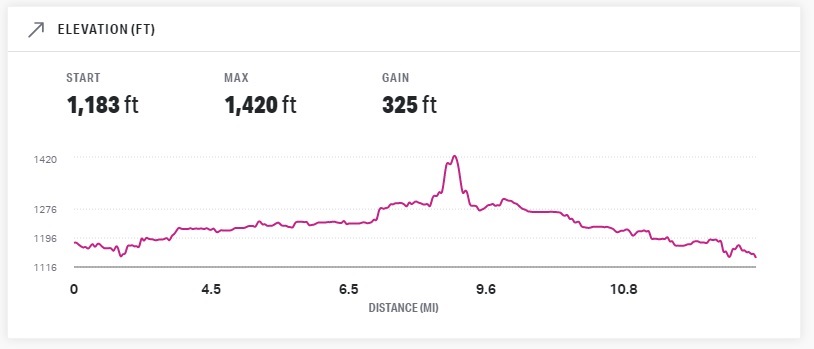
Note the maximum elevation of 1,420 feet at around mile 9, and a sharp increase and decrease before it. That is the hill just east of Papago Park Military Reservation, and the-out-and-back on the road that covers it. (Also note the overall gradual uphill for the first half of the course, and the overall gradual downhill for the second half of the course.)
My plan in this race was to "run out of my mind": hold a 4:52/mile pace throughout, good enough for a 63:59 and a ticket to Georgia in February. Turns out I almost missed the start, though, since after warming up for the 25 minutes before the 7:50 a.m. start, I was stashing my warm-ups in my gear bag at the gear truck when I heard the national anthem, beginning at 7:45 a.m., followed by a horn, and a shout of "they're off" over the announcer's loudspeakers just after. I panicked, and raced from the gear truck through the crowd, to where a volunteer was checking race numbers, glanced at mine, and said, "Go, go!" Indeed, it was a good thing I had warmed up thoroughly, since, thankfully, it was the wheel chair start I had heard and, I only had time for two strides before the gun, with the last one brought to an abrupt close by the volunteer official to all the athletes at the start line: "Let's go, let's go!"
I took a few deep breaths, air squatted, bounced on my toes a couple times, visualized the course and my plan for it, and then, as is the beautiful aspect of road racing, before my mind could hesitate, was in the flow of the pack, in the middle of the race, with time recording on.
There is something mystical about the difference between the second before the start of a race and the second after. They are as vastly different states of mind and body as are two different people. When I started racing, in high school, this was the initial hook for me: this experience of a complete shift in focus, of a period of time in which concentration and your sense of time were inversely related: one at a maximum, and the other at a minimum. I found myself in that space between the start and the finish. I found reserves I didn't know I had, I found gears I didn't know I could reach, and I found a tolerance for pain and the broader aspects of life experience I didn't commonly possess. It was addicting, frankly. This sensation of speed and lightness, of your feet barely touching the ground. It was, and still was on this morning in Arizona, why I raced.
I didn't hit 63:59 that morning. Not even close. I hit 72:54 though, which was an improvement upon the attempt in Race #1 in Colorado. Two NAZ Elite women athletes passed me at the corner of Sky Song Boulevard and Innovation Place in Scottsdale, just under what looks like a big-top circus tent (check it out on Google Maps). Three elite women athletes, racing for their 72:59 qualifying time, passed me just before the bridge on North Mill Ave back into Tempe, AZ. The winner, Daniel Kenmoi, finished in 60:24. The eventual second place finisher in the Trials, behind Oregon and Nike ace Galen Rupp, Jacob Riley, finished in 63:16. On the day: 19 OTQs, 14 by men, 5 by women.
Here are the results of the Top 55:
Division/Race Number Place Athlete Time
M Elite 6 M1 Daniel Kemoi 1:00:24 (60:24)
M Elite 16 M2 Panuel Mkungo 1:01:01 (61:01)
M Elite 14 M3 Brian Shrader 1:01:07 (61:07)
M Elite 1 M4 Daniel Mesfun 1:01:45 (61:45)
M Elite 23 M5 Matt McDonald 1:01:45 (61:45)
M Elite 28 M6 Tesfu Tewelde 1:01:48 (61:48)
M Elite 11 M7 Jim Walmsley 1:02:13 (62:13)
M Elite 4 M8 Wilkerson Given 1:02:26 (62:26)
M Elite 25 M9 Kiya Dandena 1:02:55 (62:55)
M Elite 10 M10 Benjamin Preisner 1:02:56 (62:56)
M Elite 8 M11 Sid Vaughn 1:03:03 (63:03)
M Elite 5 M12 Evan Esselink 1:03:05 (63:05)
M Elite 7 M13 Jacob Riley 1:03:16 (63:16)
M Elite 17 M14 Jonas Hampton 1:03:22 (63:22)
M Elite 9 M15 Chad Hall 1:04:40 (64:40)
M Elite 26 M16 Travis Morrison 1:04:42 (64:42)
M Elite 21 M17 Malcolm Richards 1:04:43 (64:43)
M Elite 18 M18 Ben Payne 1:04:57 (64:57)
M Elite 32 M19 Trevor Capra 1:05:01 (65:01)
M Elite 30 M20 Fermin Villagran 1:05:03 (65:03)
M Elite 19 M21 Jason Simpson 1:05:27 (65:27)
M Elite 33 M22 Peter Geithner 1:05:37 (65:37)
M Elite 31 M23 Rhys Park 1:07:34 (67:34)
M Elite 40 M24 Bolota Asmerom 1:07:49 (67:49)
M18-24 #1026 M25 Jordan Black 1:07:53 (67:53)
M Elite 36 M26 Hunter Bliss 1:08:27 (68:27)
M Elite 40 M27 Daniel Jaskowak 1:08:37 (68:37)
M Elite 24 M28 Brandon Johnson 1:08:50 (68:50)
M Elite 27 M29 Bashash Walio 1:09:05 (69:05)
F Elite 52 F1 Stephanie Bruce 1:09:13 (69:13)
F Elite 51 F2 Kellyn Taylor 1:09:13 (69:13)
M Elite 12 M30 Ben Bruce 1:09:18 (69:18)
M25-29 #9472 M31 Tyler Hilt 1:10:57 (70:57)
M30-34 #1018 M32 Chad Beyer 1:11:09 (71:09)
M25-29 #1014 M33 Jake Suss 1:11:12 (71:12)
M25-29 #1023 M34 Alan Johnston 1:11:21 (71:21)
M25-29 #8897 M35 Shlomo Schreiber 1:12:09 (72:09)
F Elite 53 F3 Bridget Belyeu 1:12:25 (72:25)
F Elite 54 F4 Sylvia Bedford 1:12:32 (72:32)
M15-17 #1020 M37 Ethan Rodriguez-Story 1:12:34 (72:34)
F Elite 58 F5 Eden Meyer 1:12:38 (72:38)
M Elite 35 M39 Nick Cunkelman 1:12:54 (72:54)
M Elite 227 M38 Jason Troxler 1:12:54 (72:54)
M Elite 22 M40 Nate Fredrick 1:13:03 (73:03)
F Elite 223 F6 Laurie Knowles 1:13:22 (73:22)
M30-34 #1028 M41 Paul Lefrancois 1:13:26 (73:26)
M35-39 #1036 M42 Aron Kroken 1:13:28 (73:28)
M25-29 #1021 M43 Erik Chazin 1:13:41 (73:41)
M Elite 37 M44 Spencer Shellberg 1:13:49 (73:49)
M18-24 #1063 M45 Ryan Silva 1:13:55 (73:55)
F30-34 #8356 F7 Lauren Weaver 1:13:56 (73:56)
M35-39 #1035 M46 William Weaver 1:13:56 (73:56)
M18-24 #1017 M47 Abdulmohsen Alali 1:14:09 (74:09)
M25-29 #1011 M48 Ruben Solorza 1:14:16 (74:16)
M15-17 #1025 M49 Brian Armijo 1:14:33 (74:33)
On Sport: Half-Marathon Road Racing for a 2020 OTQ, Race #1
In the build-up to the 2020 U.S. Olympic Trials held in Atlanta, GA, I raced in two potential qualifying half-marathons. This post is on the first of the two races, the Humana Rock ‘N Roll Denver Half-Marathon, on October 20, 2019. (61 days before the end of the qualifying window, January 19, 2020). The 2020 qualifying standard for men in the half-marathon was 1:03:59, or 63:59.
In 2019, 71:00 was the qualifying standard for a complimentary entry into any Rock ‘N Roll Half-Marathon, provided the time standard was achieved within 18 months prior to the race. 71:00 for 13.1 miles is a 5:25/mile pace, or a little slower than 81 seconds per 400m—from breaking it into manageable parts. The qualifying standard in 2019 for the next level, trials in February 2020, was 63:59 for 13.1 miles—a 4:52/mile pace, or exactly 73 seconds per 400m. The mental aspect of this sport is just this: focus on running 400m splits on pace and add them up. Easier said than done, of course.

Read more
These conversions are also applicable over the half marathon distance (my personal favorite post-collegiate race distance) because “halves” do not involve the physiological “wall”—the switch from the consumption of fast-burning glucose to slow-burning glycogen—that distances of over 20 miles do. It’s human nature to avoid unnecessary pain, even in distance running, and focusing on the half is one way to do just that. I even started in this sport with the goal of racing a little over 6 miles—10,000m—after learning from an ESPN broadcast during the 2006 FIFA World Cup that players run that distance on average in a game. That makes the half marathon a natural progression 13 years later: “halves” are, in sum, FIFA World Cup double-headers, plus a mile.
My friend Scott from A-B, who lives in Colorado, ran in Utah with me in the qualifying race for this half-marathon in September 2019: Revel Big Cottonwood—yes, an all-downhill race—and I made plans to crash at his brother’s home in Denver for the Rock ‘N Roll weekend of October 17-19, 2019. It was also serendipitous that I did not have to be at school on Friday, October 17, and could focus solely on travel, since I’d be driving in the Suby through southern Wyoming, and the winds peaked at over 50 m.p.h. on Route 80 that Friday. (It was a gnarly drive; I made the mental note to drive to Utah via Route 70 past Moab after the race on Sunday.)
The two days before any race are critical, albeit also quite boring to recount. I ran both days—Friday and Saturday—with Saturday a.m.’s run at Genesee Park west of Denver, in Golden, on the trails of the Chavez and Beaver Brook Trail Loop. (Friday morning, before traveling, I ran in Park City.) Saturday was also race number pickup day, which I did after my a.m. run and running the stairs around Red Rocks Amphitheater, and before picking up my race number after breakfast and a trip to the park in the afternoon. I made my usual pre-race dinner—grilled chicken, rice, broccoli, and watched the Astros play the Yankees in the ALCS live from Houston.
I woke up the next morning at 5:30 A.M. and showered first thing before dressing to race. I made it to the start line area by 6:15 A.M., after doing several roundabout drives considering where exactly to park in downtown, before parking on North Broadway Street facing south and stashing my stuff by a tree in the Civic Center Park, and then went for my warmup. When I was running up a hill outside of the start area I heard a few people comment: “He’s already warming up.” (I always try to squeeze in the most warm-up time without too much fatigue, and it always adds a little stress—I wasn’t particularly nice at the gear check-in; I needed more clothespins for my race number and I’ll admit I did cut to the front of the line to drop off my bag.) I scrambled into the starting corral just in time for two strides before I accidentally stepped on the toes of one of the female athletes behind me. “Sorry,” I said, quickly. And then to the athletes next to me at the front of the line: “Good luck, guys!” To, as expected, no response.
And then the horn and the start. The temperature and wind in Denver at 7:00 A.M. on October 20, 2019 were a high of 48 degrees Fahrenheit with scattered clouds and a strong 20 m.p.h. west wind, which was a tailwind for the first half of the course and a stiff headwind for the final 3.1 miles. My watch splits were a steady 5:35 throughout—well outside 4:52, and so I was confused to read 77 minutes on the finish line clock. Turns out the course was long—0.64 miles long, to be exact. That converts my 77:28 (5:50/mile) to 73:42 (5:38/mile). Course maps and elevation profile below.
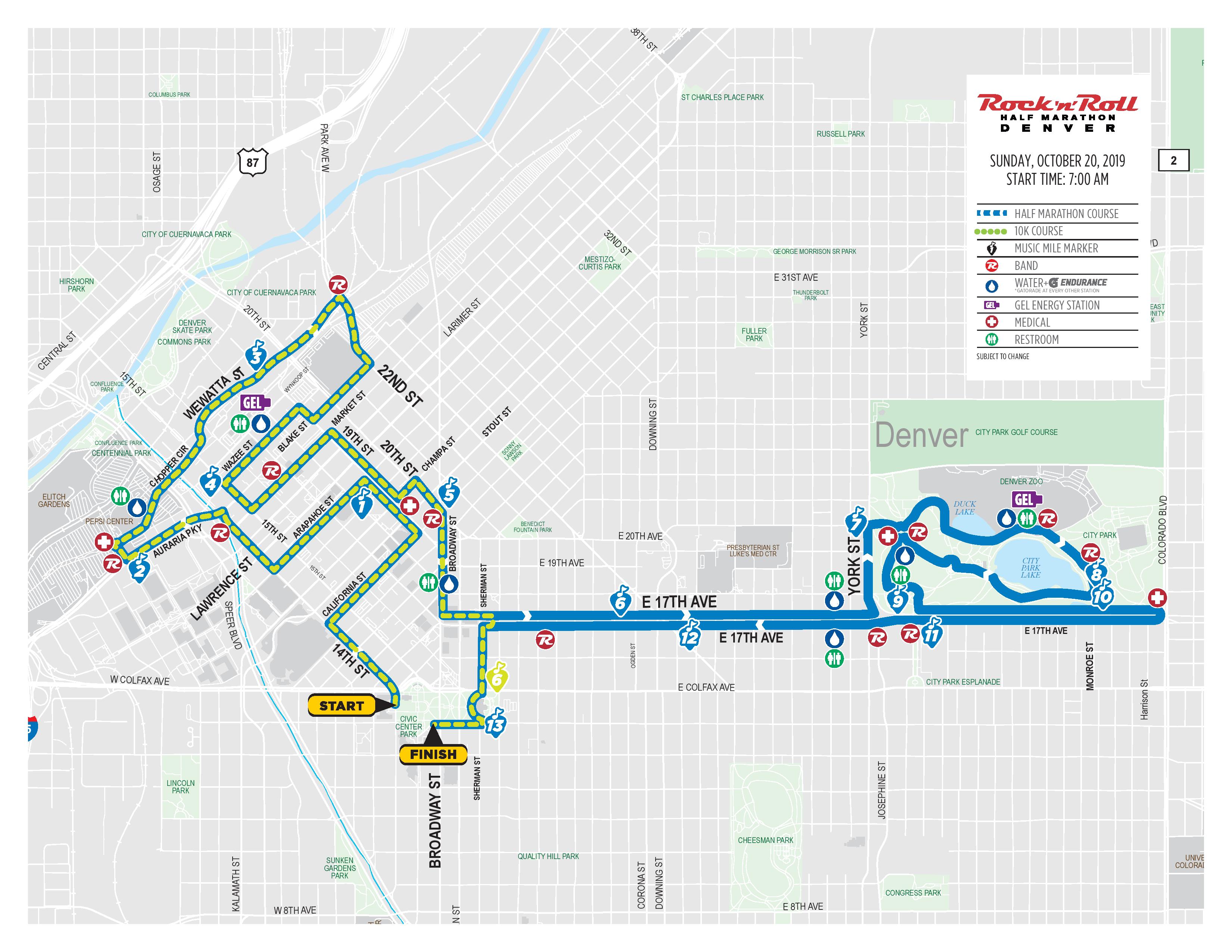


And the longer course means that the winning time, 68:06, was actually a 64:51 for 13.1—52 seconds, though, over 13 miles is 4 seconds per mile, which is significant in distance, and especially with more pace; the difference between 4:56 and 4:52 is exponentially more difficult than 5:56 and 5:52. Still, the longer course makes conversions necessary, which I’ve added to the top 16 results in this post.
Here are the results of the Top 20:
Division/Race Number Place Athlete Time
M18-24 #1003 M1 Eric Hamer 1:08:06 (68:06) (Actually 1:04:51; 64:51)
M Elite 28 M2 / M Elite 1 Bryn Morales 1:08:36 (68:36) (Actually 1:05:43; 65:43)
M Elite 6 M3 / M Elite 2 Dan Feeney 1:08:45 (68:45) (Actually 1:05:43; 65:43)
M Elite 13 M4 / M Elite 3 Brackin Stewart 1:09:48 (69:48) (Actually 1:05:43; 65:43)
M Elite 5 M5 / M Elite 4 Kenneth Foster 1:10:16 (70:16) (Actually 1:07:02; 67:02)
M Elite 4 M6 / M Elite 5 Garret Lee 1:10:24 (70:24) (Actually 1:07:03; 67:03)
M Elite 11 M7 / M Elite 6 Alex Mauro 1:10:30 (70:30) (Actually 1:07:15; 67:15)
M Elite 2 M8 / M Elite 7 Clint Wells 1:11:51 (71:51) (Actually 1:08:33; 68:33)
M25-229 M9 Zebulon Hanley 1:11:52 (71:52) (Actually 1:08:34; 68:34)
M Elite 8 M10 / M Elite 8 Kyle Mena 1:11:53 (71:53) (Actually 1:08:35; 68:35)
M Elite 10 M11 / M Elite 9 Charles Remillard 1:12:26 (72:26) (Actually 1:09:00; 69:00)
M Elite 1 M12 / M Elite 10 Bashash Walio 1:13:09 (73:09) (Actually 1:09:39; 69:39)
M30-34 #1007 M13 Brian Schroy 1:14:35 (74:35) (Actually 1:11:11; 71:11)
M35-39 #6860 M14 Ben Kadlec 1:15:56 (75:56) (Actually 1:12:29; 72:29)
M25-29 #1010 M15 Dave Wing 1:16:32 (76:32) (Actually 1:12:55; 72:55)
M Elite 7 M16 / M Elite 11 Nick Cunkelman 1:17:26 (77:26) (Actually 1:13:48; 73:48)
M30-34 #6148 M17 Zach Pollock 1:17:48 (77:48)
M30-34 #1011 M18 Matthew Drake 1:18:28 (78:28)
M30-34 M19 Trevar Hupf 1:18:40 (78:40)
M25-29 #6153 M20 Ross Tremblay 1:18:57 (78:57)
New Balance Product Testing #9: Fresh Foam X Hierro v7 (Carbon-Neutral Prototype)
The seventh iteration of New Balance's Fresh Foam X Hierro trail trainer -- this one with Carbon-Neutral materials sourcing and offsets.
These are test prototypes for New Balance #notsponsored.


New Balance Product Testing #8: FuelCell Summit Unknown v1 (New Outsole)
The first iteration, with a new outsole, of New Balance's trail trainer, the FuelCell Summit Unknown v1 -- as well as Gore-Tex waterproof and breathable technology
These are test prototypes for New Balance #notsponsored.
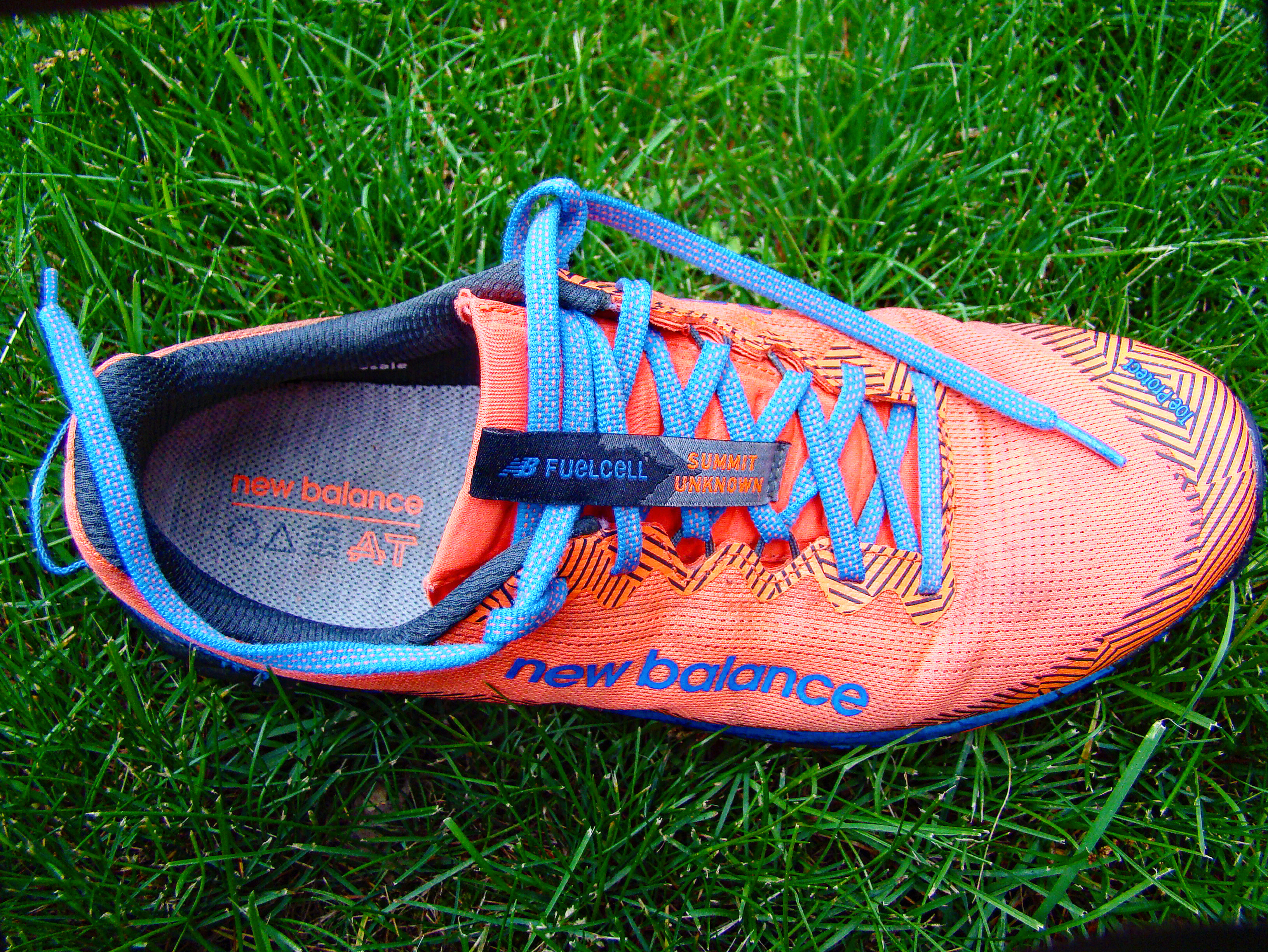


New Balance Product Testing #7: FuelCell Summit Unknown v3
The third iteration of New Balance's trail trainer, the FuelCell Summit Unknown v3, with Gore-Tex waterproof and breathable technology
These are test prototypes for New Balance #notsponsored.

New Balance Product Testing #6: 880v10 GTX
The tenth iteration of New Balance's road trainer, the 880, with Gore-Tex waterproof and breathable technology.
These are test prototypes for New Balance #notsponsored.
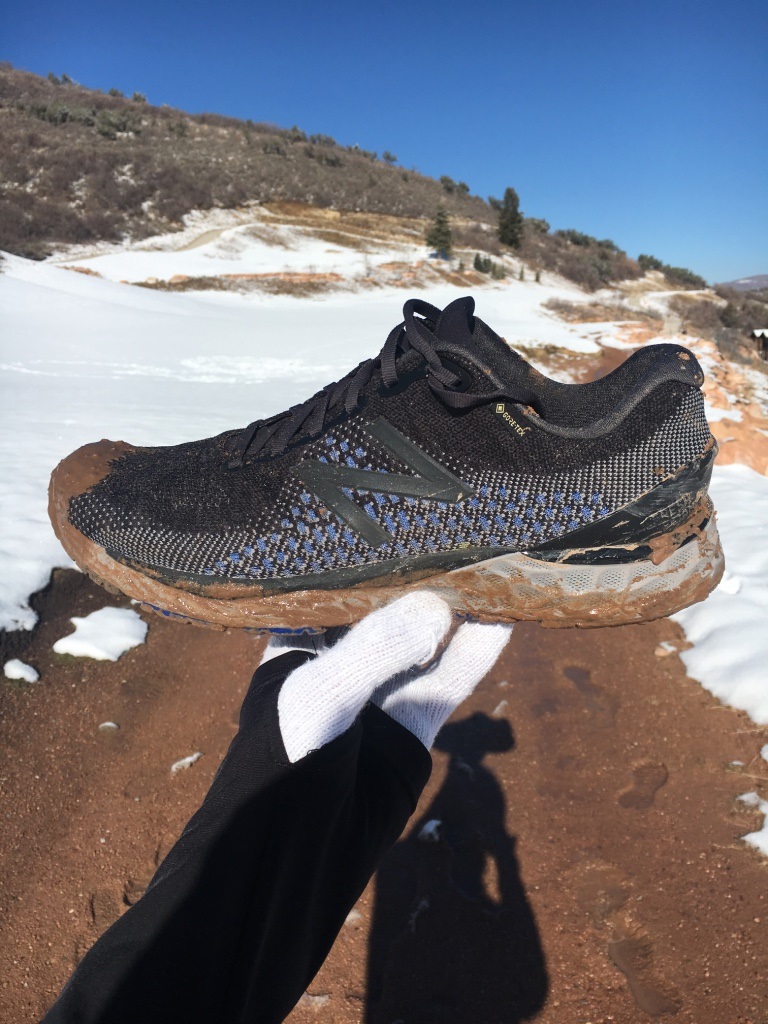
New Balance Product Testing #5: FreshFoam More v2
The second iteration of New Balance's maximalist trainer -- the FreshFoam More.
These are test prototypes for New Balance #notsponsored.

New Balance Product Testing #4: Summit Unknown v2
The second iteration of New Balance's trail trainer, the Summit Unknown v2, with Gore-Tex waterproof and breathable technology.
These are test prototypes for New Balance #notsponsored.

New Balance Product Testing #3: 720 LB3
These trainers -- I got injured in these trainers.
These are test prototypes for New Balance #notsponsored.
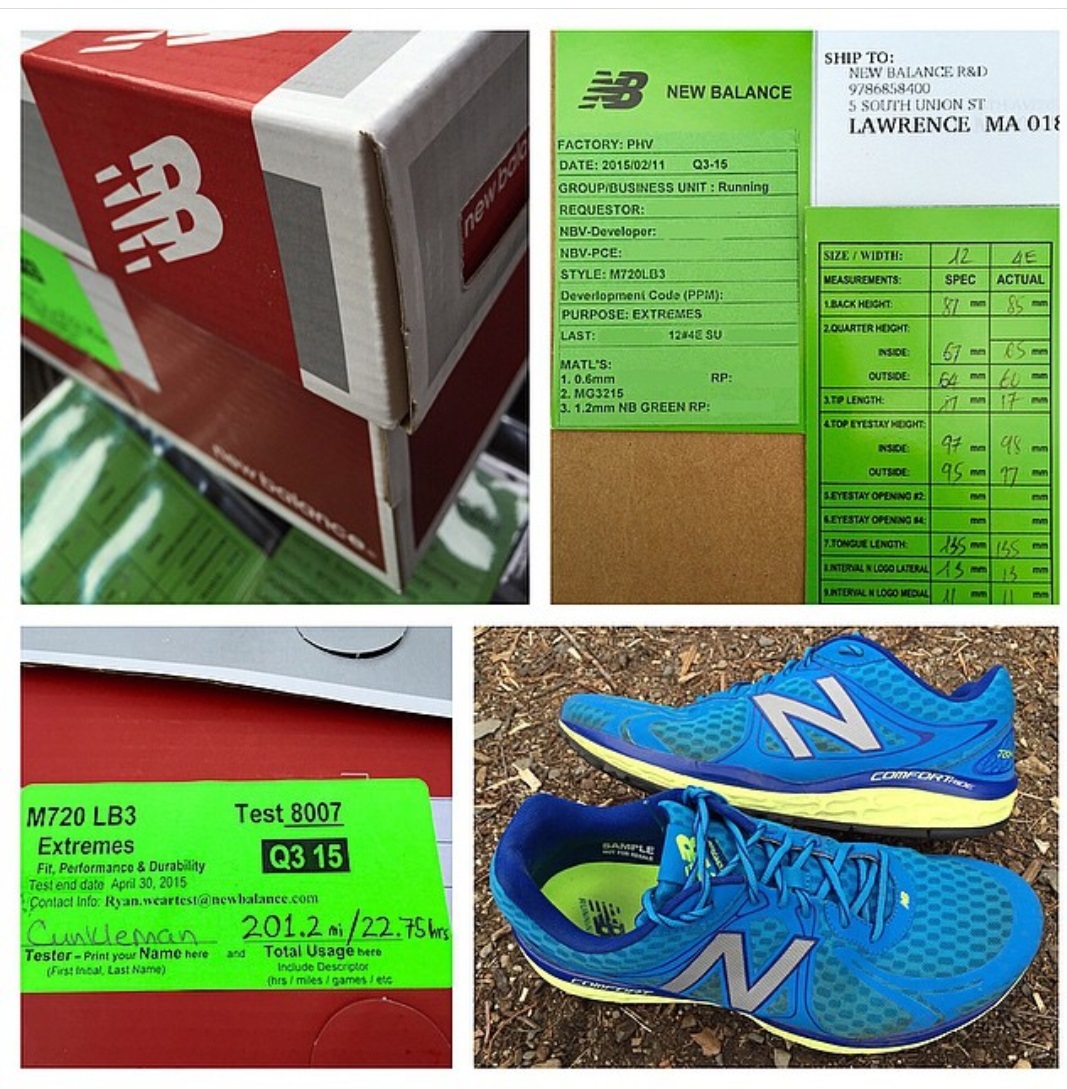
New Balance Product Testing #2: 530 v2 Comfort Ride
The second iteration of New Balance's comfort wear -- the 530 v2.
These are test prototypes for New Balance #notsponsored.

New Balance Product Testing #1: 880v5
The fifth iteration of New Balance's road trainer -- the 880.
These are test prototypes for New Balance #notsponsored.


